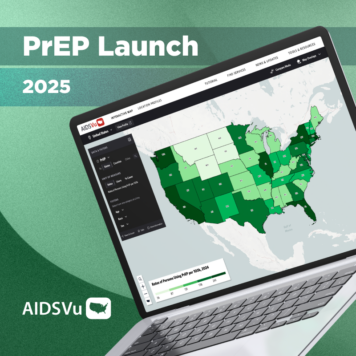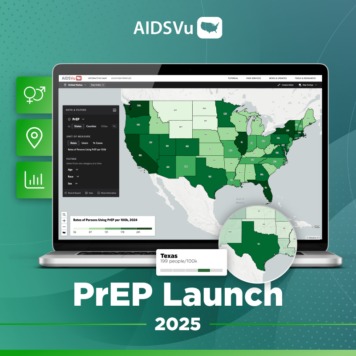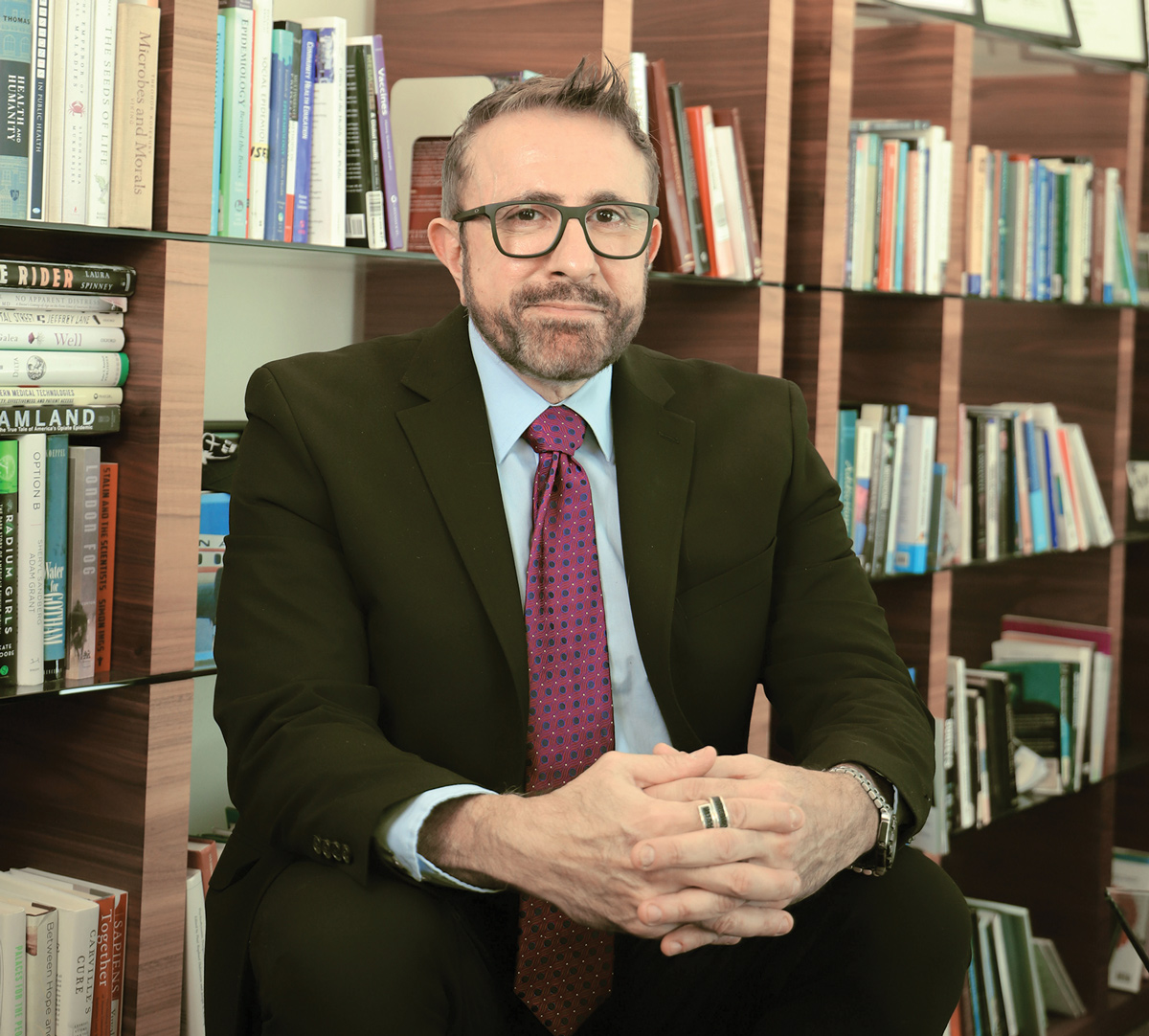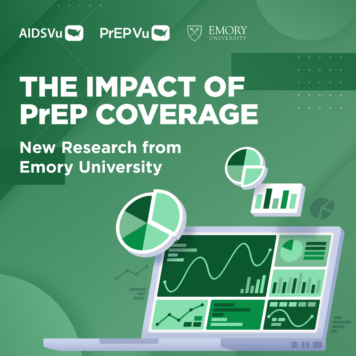Sharoda Dasgupta, PhD, MPH is a Lieutenant Commander in the US Public Health Service, and an epidemiologist at the Centers for Disease Control and Prevention (CDC), where she primarily works on one of CDC’s three national HIV surveillance systems, the Medical Monitoring Project (MMP).
The Medical Monitoring Project (MMP) traditionally collects data on people living with diagnosed HIV that may not always be included in traditional HIV surveillance, such as behaviors, clinical outcomes, quality of care, barriers to care, and viral suppression. How did you become involved with the project and what do you see as the function of the MMP in the wider world of HIV surveillance?
The National HIV Surveillance System, or NHSS, collects key information on all adults and adolescents with diagnosed HIV in the United States, so it is considered a census of people with HIV. MMP takes a representative sample of people who were reported to NHSS and collects additional information from participants, including on barriers to care and viral suppression, social determinants of health (SDOH), and quality of life indicators. Data are representative at the national level and for each of the 16 states (including 6 separately funded jurisdictions) and 1 territory that report to MMP on people with HIV. MMP is an incredibly rich dataset that provides a more complete picture of people with HIV’s lived experiences, allowing local and national partners to use the data to focus resources in order to improve outcomes among people with HIV. For instance, the White House uses MMP data to monitor 5 quality of life indicators and HIV stigma to assess disparities among people with HIV and progress towards meeting National HIV/AIDS Strategy goals. So, MMP data are directly being used to help bring us closer to ending the HIV epidemic, and improve the lives of people who are currently living with HIV in the U.S.
As for how I wound up working on MMP data, the short version is that each stage of my life—through academic training, personal experiences, and boots-on-the-ground epidemiology work—has brought me closer towards focusing on work related to how people’s life experiences affect their health. One of these formative experiences was a study I led in India, in which I assessed the effects of social support on the health of women with HIV. Through my conversations with women, I got to see firsthand the effects of poverty, lack of familial and other social support, and lack of resources on people’s overall well-being. The relationships I formed in the local community had a long-lasting impression on me, and one that has influenced my work in the years that followed. Another deeply influential project I worked on was in the community of Scott County, Indiana, which experienced a substantial HIV outbreak among people who inject drugs. My heart broke seeing people’s lack of access to basic necessities, including food, shelter, water, and heat, which we know provide a strong foundation for good health and well-being. Fast forward to 2017, after completing the Epidemic Intelligence Service program—a 2-year fellowship that focuses on boots-on-the-ground work on the front lines of public health—I joined the team at CDC that works on MMP data.
MMP is adding two indicators to AIDSVu’s local data profiles this year: homelessness/unstable housing and HIV-related stigma. What is the value of measuring the lived experience of people living with HIV in addition to more traditional surveillance measure such as new diagnoses and viral suppression?
First, we are so happy for this collaboration and are so excited to see these data up on the AIDSVu website!
There is great value in measuring and monitoring factors related to the lived experiences of people with HIV. Recognizing the role of social determinants of health in achieving health equity, improving the lives of people with HIV, and ending the HIV epidemic, the White House has recently prioritized monitoring of different aspects of quality of life among people with HIV—including aspects of physical health, mental or emotional health, and subsistence or structural factors such as housing instability—and HIV stigma.
People with HIV are more than just their viral loads and CD4 counts. Venita Ray, the co-executive director of the Positive Women’s Network, put it best when she said, “Everything in our life is about two numbers—our viral load and our CD4 counts—most don’t see us as a whole person. For the federal government through our advocacy to finally acknowledge quality of life, it humanizes us.”
Measuring something as amorphous as HIV-related stigma requires you to take highly qualitative data and translate it into the quantitative realm. What was your method, and what insights were you most surprised to find?
All MMP respondents were asked about HIV stigma through a 10-item scale, which resulted in a score that ranged from 0 (indicating no stigma) to 100 (indicating high stigma). The scale measured four dimensions of HIV stigma—personalized stigma during the past 12 months, current disclosure concerns, current negative self-image, and current perceived public attitudes about people living with HIV. The data show that people with HIV very clearly experience HIV stigma—although sadly, this is not surprising. What was surprising to me was how much higher levels of experienced HIV stigma were among younger persons compared with other age groups (median score among persons aged 18-24 years: 42.1; range for median scores among persons aged ≥25 years: 25.7-32.9).
Given that HIV stigma and discrimination can affect the health and well-being of people with HIV, the visionary goal of the National HIV/AIDS Strategy is for people with HIV to live free of stigma and discrimination. HIV stigma is rooted in fear and lack of awareness, as well as structural factors such as HIV criminalization laws. Combatting HIV stigma requires a multipronged approach, including increasing awareness about HIV to reduce misconceptions around HIV and ensuring that HIV providers receive antidiscrimination training that focuses on the importance of cultural and sexual health competency. CDC prioritizes combatting stigma through the “Let’s Stop Together” campaign to help increase awareness of HIV stigma and the role of all people in our community in stopping HIV stigma.
In 2021, 17% of people living with HIV reported experiencing homelessness or unstable housing. Estimates vary as to the percentage of Americans currently experiencing the same, but it is clear this population is disproportionately impacted, especially when we take into account gender identity; 27% of transgender individuals report being in a state of homelessness or unstable housing. What kind of impact does this have on an individual’s ability to get and stay in care?
People with HIV are disproportionately affected by housing issues for sure. Although this is not a comparable measure, a recent analysis of ours found that people with HIV have much higher levels of homelessness compared with the total U.S. population (8.1% versus 0.2%). Housing instability has detrimental effects on people with HIV’s health, including related to suboptimal HIV care engagement, lower ART dose adherence, and being virally unsuppressed (see here and here for more details). That is why addressing housing instability among people with HIV is such a high priority—to improve people’s lives and provide a foundation for good health. Unstable housing or homelessness, as you mentioned, is remarkably high among transgender persons compared with cisgender men or cisgender women. In an analysis that just was recently accepted by LGBT Health, we showed that unmet needs for shelter or housing assistance among transgender women with HIV was high, and that unmet needs for subsistence services like shelter or housing assistance were associated with adverse outcomes, including missing antiretroviral therapy doses, not being virally suppressed, and having more than one emergency room visit.
It has become common to use health equity as a lens through which to view data relating to the HIV epidemic, and new methods for measuring health equity are helping advocates, researchers, public health workers better tailor their methods. How do you see these data being used as a part of that larger project?
To our knowledge, MMP is the only source of representative data on individual-level SDOH and quality of life measures that contribute to health disparities experienced among people with HIV. We continue to use MMP data at CDC and through collaborations with our partners to identify and address health disparities experienced among people with HIV. We are always trying to stay current on the most salient ways to analyze and present health disparities to prompt public health action and improve outcomes among people with HIV. As health equity methods continue to evolve, we look forward to continuing to be at the table. We will continue to collaborate with our partners about approaches to analyzing disparities, and always welcome folks to reach out to us if they do want to use MMP data in meaningful ways.
I think one important takeaway from these data, though, is that describing health disparities among people with HIV is only a first step. Achieving health equity involves using those data in a meaningful way to spark change and improve the lives of people with HIV. For instance, in a recent MMP analysis, we identified geographic disparities in needs for shelter or housing assistance among people with HIV and found that current funding through the Department of Housing and Urban Development’s Housing Opportunities for People with AIDS (HOPWA) program was not sufficient for addressing housing instability among people with HIV. These results were used to justify increasing the White House’s FY2024 proposed budget for the program by $6 million.




